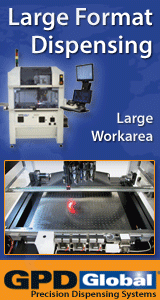Printed Circuit Board Assembly & PCB Design Forum
SMT electronics assembly manufacturing forum.
- SMTnet
- »
- Electronics Forum
- »
- Sn/Pb diffusion
Sn/Pb diffusion
![]() I need to find out about tin/lead diffusion and how this cau...
- Apr 29, 2002
by
geoff_goring
I need to find out about tin/lead diffusion and how this cau...
- Apr 29, 2002
by
geoff_goring
![]()
![]()
![]() See, I didn�t bite on you zinc diffusion trick that you trie...
- Apr 29, 2002
by
davef
See, I didn�t bite on you zinc diffusion trick that you trie...
- Apr 29, 2002
by
davef
![]()
![]()
![]() Dave
Many thanks for your very informative piece on SMT.c...
- May 03, 2002
by
geoff_goring
Dave
Many thanks for your very informative piece on SMT.c...
- May 03, 2002
by
geoff_goring
![]()
![]()
![]() Interesting situation.
Everything [ie, intermetallic comp...
- May 03, 2002
by
davef
Interesting situation.
Everything [ie, intermetallic comp...
- May 03, 2002
by
davef
![]()
![]()
![]() As I thought.....
This is probably why most journals and ...
- May 15, 2002
by
geoff_goring
As I thought.....
This is probably why most journals and ...
- May 15, 2002
by
geoff_goring
![]()
![]()
![]() Based on what you�ve said, comments are:
* There is no reas...
- May 17, 2002
by
davef
Based on what you�ve said, comments are:
* There is no reas...
- May 17, 2002
by
davef
![]()
![]()
![]() Are we saying then that IMC can occur at the solder / Cu pad...
- May 20, 2002
by
geoff_goring
Are we saying then that IMC can occur at the solder / Cu pad...
- May 20, 2002
by
geoff_goring
![]()
![]()
![]() Q1: Are we saying then that IMC can occur at the solder / Cu...
- May 20, 2002
by
davef
Q1: Are we saying then that IMC can occur at the solder / Cu...
- May 20, 2002
by
davef
![]()
geoff_goring
- SMTnet
- »
- Electronics Forum
- »
- Sn/Pb diffusion







